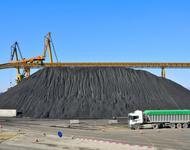The Future for Coal - ORIGINAL CONTENT
- By:
- Edward A. Reid Jr.
- Posted On:
- Jun 30, 2025 at 6:00 AM
- Category
- Energy Policy, Climate Change
President Trump has issued several Executive Orders (EOs) intended to encourage the continued operation of existing coal generating stations, to return some recently shuttered generating stations to operation and to restore access to available coal resources to help meet the expected rapid growth of electricity demand and consumption.
While these EOs would likely help avoid some further loss of reliable, dispatchable generating capacity, it is unlikely that they would stimulate investment in major life extension projects for existing generators or in new coal generating facilities, since the EOs could easily be reversed by a subsequent federal administration focused on Net Zero by 2050 or some other CO2 emissions reduction goal.
Investment in construction of new coal generating capacity would likely require Congressional action to assure that those powerplants, once constructed, would be permitted to operate throughout their expected useful lives, preferably including life extension, without the imposition of extremely expensive high percentage carbon capture and storage (CCS) systems which would both increase operating costs and reduce powerplant net generating capacity to support the parasitic power requirements of the CCS systems.
Coal powerplants have the advantage of relatively inexpensive onsite fuel storage to assure their availability even during periods of fuel supply disruption. Their output can also be adjusted to match changing grid demand as well as the changing supply from intermittent renewable generators, though they cannot adjust as rapidly as natural gas combined-cycle or simple-cycle turbine generators.
States with Renewable Portfolio Standards (RPS), while they would likely allow continued operation of existing coal generating facilities as backup for intermittent renewable generation, would also likely resist life extension for those coal plants or the construction of new coal generation capacity, even if additional conventional generation capacity were required to provide additional backup for a growing renewable generation fleet.
State RPSs were intended to achieve Net Zero by 2050, and to achieve zero emissions from electricity generation by some earlier date, typically 2035 or 2040. The transition of energy end uses other than electric generation would require an approximate tripling of electric generation capacity by 2050. The anticipated growth of AI and other data centers would require substantial additional growth of generating capacity.
However, the developers of AI and data centers are unwilling to rely on intermittent renewable generation to power their facilities. Various developers have taken differing approaches to reliable electricity supply, including restarting currently inactive nuclear generating capacity, installing multiple natural gas combined-cycle powerplants and installing fleets of small modular nuclear generators (SMRs). Most of these proposed approaches would be independent of the existing, regulated electricity generation systems in the regions in which they would be located.
While these independent generation facilities would likely be acceptable in states without RPSs, it is uncertain how the states with RPSs would respond to the installation of large generating facilities which did not advance the percentage of renewable generation operating in the states. This issue could have a major influence on the location of AI and data centers.


